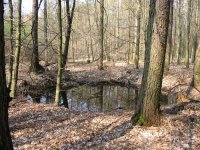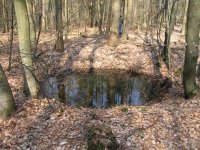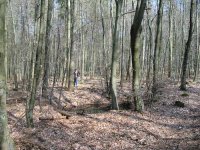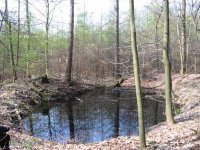Circular lakes sure do look cool, and are normally considered to be admirable creations of nature. Along with circular lakes there are smaller lakes with imperfect round shape. We are provided with multiple reasons for the existence of the said lakes. Those normally are: meteorite craters, sinkholes, gas explosion lakes, etc. The official narrative wants us to think that these "natural" lakes are hundreds of thousands, and sometimes millions of years old. But are those lakes really natural, and are they really as old as we are being told?
On 12 August 2015, a series of explosions killed 173 people and injured hundreds of others at a container storage station at the Port of Tianjin. The first two explosions occurred within 30 seconds of each other at the facility, which is located in the Binhai New Area of Tianjin, China. The second explosion was far larger and involved the detonation of about 800 tonnes of ammonium nitrate. Fires caused by the initial explosions continued to burn uncontrolled throughout the weekend, resulting in eight additional explosions on August 15.
Sedan Crater, NV, USA

Sedan Crater is the result of the Sedan nuclear test and is located within the Nevada Test Site, 12 miles (19 km) southwest of Groom Lake, Nevada (Area 51). The crater was listed on the National Register of Historic Places on March 21, 1994. The crater is the result of the displacement of 12,000,000 short tons (11,000,000 t) of earth. The 1,280 by 320 ft (390 by 100 m) crater was created on July 6, 1962 by a 104-kiloton-of-TNT (440 TJ) thermonuclear explosion. The device was buried 635 feet (194 m) below the desert floor in Area 10. The explosion created fallout that affected more US residents than any other nuclear test, exposing more than 13 million people to radiation. Within 7 months of the excavation, the bottom of the crater could be safely walked upon with no protective clothing and photographs were taken.
The crater was created about 50,000 years ago during the Pleistocene epoch, when the local climate on the Colorado Plateau was much cooler and damper. The area was an open grassland dotted with woodlands inhabited by mammoths and giant ground sloths. The object that excavated the crater was a nickel-iron meteorite about 160 feet (50 meters) across. The speed of the impact has been a subject of some debate. Modeling initially suggested that the meteorite struck at up to 45,000 mph (20 km/s) but more recent research suggests the impact was substantially slower, at 29,000 mph (12.8 km/s). It is believed that about half of the impactor's bulk was vaporized during its descent through the atmosphere. Impact energy has been estimated at about 10 megatons. The meteorite was mostly vaporized upon impact, leaving few remains in the crater.
Kingsley Lake, Fl, USA

Kingsley Lake is an almost circular lake of about 2,000 acres (810 ha) in North Central Florida, about six miles (9.7 km) east of Starke, Florida. According to some sources, it is the oldest and highest lake in Florida, located on the edge of the Trail Ridge formation. The lake is a very stable lake with a sandy bottom. Its deepest part is about 90 feet (27.4 m). Kingsley lake is so nearly circular that pilots call it the Silver Dollar lake.
Kankaria Lake is the second largest lake in Ahmedabad, Gujarat, India. It is located in the south-eastern part of the city, in the Maninagar area. It was completed in 1451 during the reign of Sultan Qutb-ud-Din Ahmad Shah IIthough its origin is placed in the Chaulukya period sometimes. The lake is 560 m (1,840 ft) wide and 6-7 meters (20-23 feet) deep.
The Lonar Lake in Maharashtra, was formed about 50,000 years ago when a meteorite hit the surface. The saltwater lake that evolved in the resulting basaltic rock formation has a mean diameter of 1.2 kilometers (3,900 feet) and is about 137 meters (449 feet) below the crater rim. Numerous temples surround the lake, most of which are in ruins, except for a temple of Daityasudan, at the center of the Lonar town, which was built in honor of Vishnu’s victory over the giant Lonasur. The crater itself is a fun trek and the surrounding vegetation is a treat for birdwatchers.
Pingualuit Crater, Canada

The Pingualuit Crater was created about 1.4 million years ago by a meteorite impact that had the force of 8500 Hiroshima-sized atomic bombs. The 3.44 km (2.14 miles) diameter crater rises 160 meters (520 feet) above the surrounding tundra and is 400 meter (1,300 feet) deep. The lake at the bottom of the crater has a depth of 270 meter (890 feet) and contains some of the purest water in the world. The lake has no inlets or apparent outlets, so the water accumulates from rain and snow and is only lost through evaporation. The crater was discovered in 1943, by a US Air Force plane on a meteorological flight. Pingualuit means “where the land rises” in the local Inuit language.
Tswaing Crater, South Africa

Tswaing is an impact crater in South Africa that is accompanied by a museum. It is situated 40 km to the north-west of Pretoria. This astrobleme is 1.13 km in diameter and 100 m deep and the age is estimated to be 220,000 ± 52,000 years (Pleistocene). The impactor is believed to have been a chondrite or stony meteorite some 30 to 50 m in diameter that was vaporized during the impact event.
Group of Lakes #1, Russia

Location Link
Group of Lakes #2, FL, USA

Location Link
Group of lakes #3, Uganda
Katwe Craters


The Katwe craters are a group of volcanic craters within Queen Elizabeth National Park in Toro, Uganda. The volcanic field is roughly 210 km2 (81 sq mi) in size. The individual craters vary widely in size, but the largest are up to 3 km (1.9 mi) in diameter and 100 m (330 ft) deep. The unusual formations were formed individually by a series of violent volcanic explosions over the last 1 million years. The explosions were a result of superheated gas and steam, and despite the volcanic activity, there was no lava flow.
Hudson Bay Arc – Crater Explorer
Did A Comet Hit Great Lakes Region, Fragment Human Populations, 12,900 Years Ago?
Meet Lake Superior’s Meteor Crater
These Tranquil Lakes Are Actually Ancient Impact Craters
The Great Hudson Arc: A 250-mile-wide mystery | Jonathan Birge

Below are a few additional maps:
KD: There are thousands of these craters covering Earth. Could some of them be natural? Sure could. I am not that positive about all of them though. As a matter of fact I hypothesize that the majority of these craters have anything but natural origins. The official impact map below is not representative of the true state of things. I believe it only displays a portion of the problem. It does not account for all the Karst Lakes, groups of smaller lakes and other suspicious bodies of water/craters. Some are not even discovered yet.
I personally find it interesting how most, if not all of the impact craters appear to reflect a trajectory which was perpendicular to the surface.
 I think we could be witnessing a lot of physical evidence of the Mahabharata level conflict where the Grand War was raged on the Earth population. The only problem we have is the date. 16th and 17th century maps suggest that this war could have taken place about 400 years ago, which appears to be supported by some of the other articles on this blog.
I think we could be witnessing a lot of physical evidence of the Mahabharata level conflict where the Grand War was raged on the Earth population. The only problem we have is the date. 16th and 17th century maps suggest that this war could have taken place about 400 years ago, which appears to be supported by some of the other articles on this blog.

Obviously the size of some of these craters is well beyond our known capabilities. May be this is why that war was called the War of Gods. And may be this is why the Ruins Landscape art was so popular in the 17th century...

Explosion Caused Lakes
and craters
Here are a few examples of the lakes which were created due to war time bombings, military testings and industrial explosions.and craters
2015 Tianjin explosions, China

On 12 August 2015, a series of explosions killed 173 people and injured hundreds of others at a container storage station at the Port of Tianjin. The first two explosions occurred within 30 seconds of each other at the facility, which is located in the Binhai New Area of Tianjin, China. The second explosion was far larger and involved the detonation of about 800 tonnes of ammonium nitrate. Fires caused by the initial explosions continued to burn uncontrolled throughout the weekend, resulting in eight additional explosions on August 15.
WW2 Peenemünde Bomb Craters, Germany

Source
Bombing of Laos, Vietnam

Source
WW2 Westerwald, Germany




A4/V2 Sites in Westerwald
Lake Chagan, Kazakhstan


Lake Chagan in Kazakhstan, is a lake created by the Chagan nuclear test fired on January 15, 1965, part of the Nuclear Explosions for the National Economy. A 140 kiloton device was placed in a 178-metre (584 ft) deep hole in the dry bed of the Chagan River. The blast created a crater 400 m (1,300 ft) across and 100 m (330 ft) deep with a lip height of 20 to 38 m (66 to 125 ft).; it is often referred to as "Atomic Lake".Source
Bombing of Laos, Vietnam
Source
WW2 Westerwald, Germany




A4/V2 Sites in Westerwald
Lake Chagan, Kazakhstan
Yucca Flat, NV, USA

Yucca Flat is a closed desert drainage basin, one of four major nuclear test regions within the Nevada Test Site (NTS), and is divided into nine test sections: Areas 1 through 4 and 6 through 10. Yucca Flat is located at the eastern edge of NTS, about ten miles (16 km) north of Frenchman Flat, and 65 miles (105 km) from Las Vegas, Nevada. Yucca Flat was the site for 739 nuclear tests – nearly four of every five tests carried out at the NTS.
Sedan Crater, NV, USA
- Diameter: 1,280 feet (390 m)
- Depth: 320 feet (98 m)
Natural Lakes
and craters
All but one of the below lakes, and craters were supposed to be created by nature. Please take a look and compare to the above man made lakes and craters.and craters
Meteor Crater, AZ, USA

The crater was created about 50,000 years ago during the Pleistocene epoch, when the local climate on the Colorado Plateau was much cooler and damper. The area was an open grassland dotted with woodlands inhabited by mammoths and giant ground sloths. The object that excavated the crater was a nickel-iron meteorite about 160 feet (50 meters) across. The speed of the impact has been a subject of some debate. Modeling initially suggested that the meteorite struck at up to 45,000 mph (20 km/s) but more recent research suggests the impact was substantially slower, at 29,000 mph (12.8 km/s). It is believed that about half of the impactor's bulk was vaporized during its descent through the atmosphere. Impact energy has been estimated at about 10 megatons. The meteorite was mostly vaporized upon impact, leaving few remains in the crater.
- Diameter: 0.737 miles (1.186 km)
- Depth: 560 feet (170 m)
Clearwater Lakes, Canada

The Clearwater Lakes occupy the near-circular depressions of two eroded impact craters (astroblemes). The eastern and western craters are 26 km (16 mi) and 36 km (22 mi) in diameter, respectively. Both craters were previously believed to have the same age, 290 ± 20 million years (Permian period), promoting the long-held idea that they formed simultaneously.
Kingsley Lake, Fl, USA
Kingsley Lake is an almost circular lake of about 2,000 acres (810 ha) in North Central Florida, about six miles (9.7 km) east of Starke, Florida. According to some sources, it is the oldest and highest lake in Florida, located on the edge of the Trail Ridge formation. The lake is a very stable lake with a sandy bottom. Its deepest part is about 90 feet (27.4 m). Kingsley lake is so nearly circular that pilots call it the Silver Dollar lake.
- The lake is thought to have formed as a sinkhole.
Lake Yeak Loam, Cambodia

Yeak Loam, is a lake and a popular tourist destination in the Ratanakiri province of north-eastern Cambodia. Located approximately 3 mi (4.8 km) from the provincial capital, Banlung, the beautiful lake occupies a 4,000-year-old volcanic crater. Due to the lake’s tremendous depth 48 m (157 ft), its water is exceptionally clean and clear. The lake is almost perfectly round and measures 0.72 km (0.45 mi) in diameter. Large trees and rich, lush rain forest, the home of many exotic birds and parrots, surround the lake.
- Occupies a 4,000-year-old volcanic crater
Cañada del Hoyo Lakes, Spain

This protected area is composed of 7 permanent lakes and 4 torcas, each receives a different names: Cruz o de la Gitana Lagoon, Tejo Lagoon, el Lagunillo del Tejo, de la Parra Lagoon, de la Llana Lagoon, de las Tortugas Lagoon & de las Cadenillas Lagoon. The depth of the lakes ranges from 4 m to 32 m. Torcas and sinkholes have been formed as a result of very complex processes of dissolving sedimentary rocks rich in carbonates (dolomite), which caused the collapse of land and conforming these circular structures. The fact that some are filled with water is due to the high groundwater level aquifer associated Guadazaón river and meteoric waters.
- Lagunas de Cañada del Hoyo are located at the southeast of the Palancares Molar, in the area known as Los Oteros, dolomitic and limestone area developed on Upper Cretaceous. The Cretaceous period lasted from 145 to 66 million years ago. It was divided into two parts, upper and lower. The Upper Cretaceous lasted from 98 to 66 million years.
Lake DeFuniak, Fl, USA

Lake DeFuniak, said to be one of only two perfectly round natural lakes in the world. Folklore has it that the lake was formed by a large meteor crashing to earth centuries ago. The circumference of the lake is 5,280 feet, which makes a pleasant mile.
- Unknown origins. Legends point to a large meteor.
Crater Lake, OR, USA

Crater Lake is a crater lake in south-central Oregon in the western United States. The lake partly fills a nearly 2,148-foot (655 m)-deep caldera that was formed around 7,700 (± 150) years ago by the collapse of the volcano Mount Mazama. There are no rivers flowing into or out of the lake; the evaporation is compensated for by rain and snowfall at a rate such that the total amount of water is replaced every 250 years. With a depth of 1,949 feet (594 m), the lake is the deepest in the United States. In the world, it ranks ninth for maximum depth, and third for mean (average) depth.
Kankaria Lake, India

Kankaria Lake is the second largest lake in Ahmedabad, Gujarat, India. It is located in the south-eastern part of the city, in the Maninagar area. It was completed in 1451 during the reign of Sultan Qutb-ud-Din Ahmad Shah IIthough its origin is placed in the Chaulukya period sometimes. The lake is 560 m (1,840 ft) wide and 6-7 meters (20-23 feet) deep.
- Was allegedly created in 1451 artificially. Being 1,840 ft wide and 20 deep... how many horse carriages is that and where did the dirt go to?
- In my opinion, the shape of the lake was artificially improved which resulted in the perfect circle.
Lonar Crater Lake, India

The Lonar Lake in Maharashtra, was formed about 50,000 years ago when a meteorite hit the surface. The saltwater lake that evolved in the resulting basaltic rock formation has a mean diameter of 1.2 kilometers (3,900 feet) and is about 137 meters (449 feet) below the crater rim. Numerous temples surround the lake, most of which are in ruins, except for a temple of Daityasudan, at the center of the Lonar town, which was built in honor of Vishnu’s victory over the giant Lonasur. The crater itself is a fun trek and the surrounding vegetation is a treat for birdwatchers.
Pingualuit Crater, Canada
Kaali Craters, Estonia


Kaali is a group of nine meteorite craters in the village of Kaali on the Estonian island of Saaremaa. Most recent estimates put its formation shortly after 1530–1450 BC (3237+/-10 14C yr BP). It was created by an impact event and is one of the few impact events that has occurred in a populated area (other ones are: Henbury craters and Carancas crater). Before the 1930s there were several hypotheses about the origin of the crater, including theories involving vulcanism and karst processes. Its meteoritic origins were first conclusively demonstrated by Ivan Reinvald in 1928, 1933 and 1937.
Tswaing Crater, South Africa
Group of Lakes #1, Russia
Location Link
Group of Lakes #2, FL, USA
Location Link
Group of lakes #3, Uganda
Katwe Craters
The Katwe craters are a group of volcanic craters within Queen Elizabeth National Park in Toro, Uganda. The volcanic field is roughly 210 km2 (81 sq mi) in size. The individual craters vary widely in size, but the largest are up to 3 km (1.9 mi) in diameter and 100 m (330 ft) deep. The unusual formations were formed individually by a series of violent volcanic explosions over the last 1 million years. The explosions were a result of superheated gas and steam, and despite the volcanic activity, there was no lava flow.
- Volcanic explosions 1 million years ago. There was no lava flow.
Bigger and Larger
Hudson bay is only one of the bigger bodies of water which was MIA on the older maps. Great Lakes were not on the older maps either. There are plenty of theories out there suggesting that millions of years ago a few rogue asteroids contributed to their creation.Hudson Bay Arc – Crater Explorer
Did A Comet Hit Great Lakes Region, Fragment Human Populations, 12,900 Years Ago?
Meet Lake Superior’s Meteor Crater
These Tranquil Lakes Are Actually Ancient Impact Craters
The Great Hudson Arc: A 250-mile-wide mystery | Jonathan Birge
- 1589 - Americae Sive Novi Orbis Nova Descriptio
- 1596 - America Sive Novus Orbis Respectu Europaeorum Inferior Globi Terrestris Pars
- 1635 - Americae Descrip
KD: There are thousands of these craters covering Earth. Could some of them be natural? Sure could. I am not that positive about all of them though. As a matter of fact I hypothesize that the majority of these craters have anything but natural origins. The official impact map below is not representative of the true state of things. I believe it only displays a portion of the problem. It does not account for all the Karst Lakes, groups of smaller lakes and other suspicious bodies of water/craters. Some are not even discovered yet.
I personally find it interesting how most, if not all of the impact craters appear to reflect a trajectory which was perpendicular to the surface.
- The Brahmastra is mentioned in the epics and Vedas as a weapon of last resort and was never to be used in combat. The Brahmastra, as described in the Mahabharata, is a weapon which is said to be a single projectile charged with all the power of the universe.

